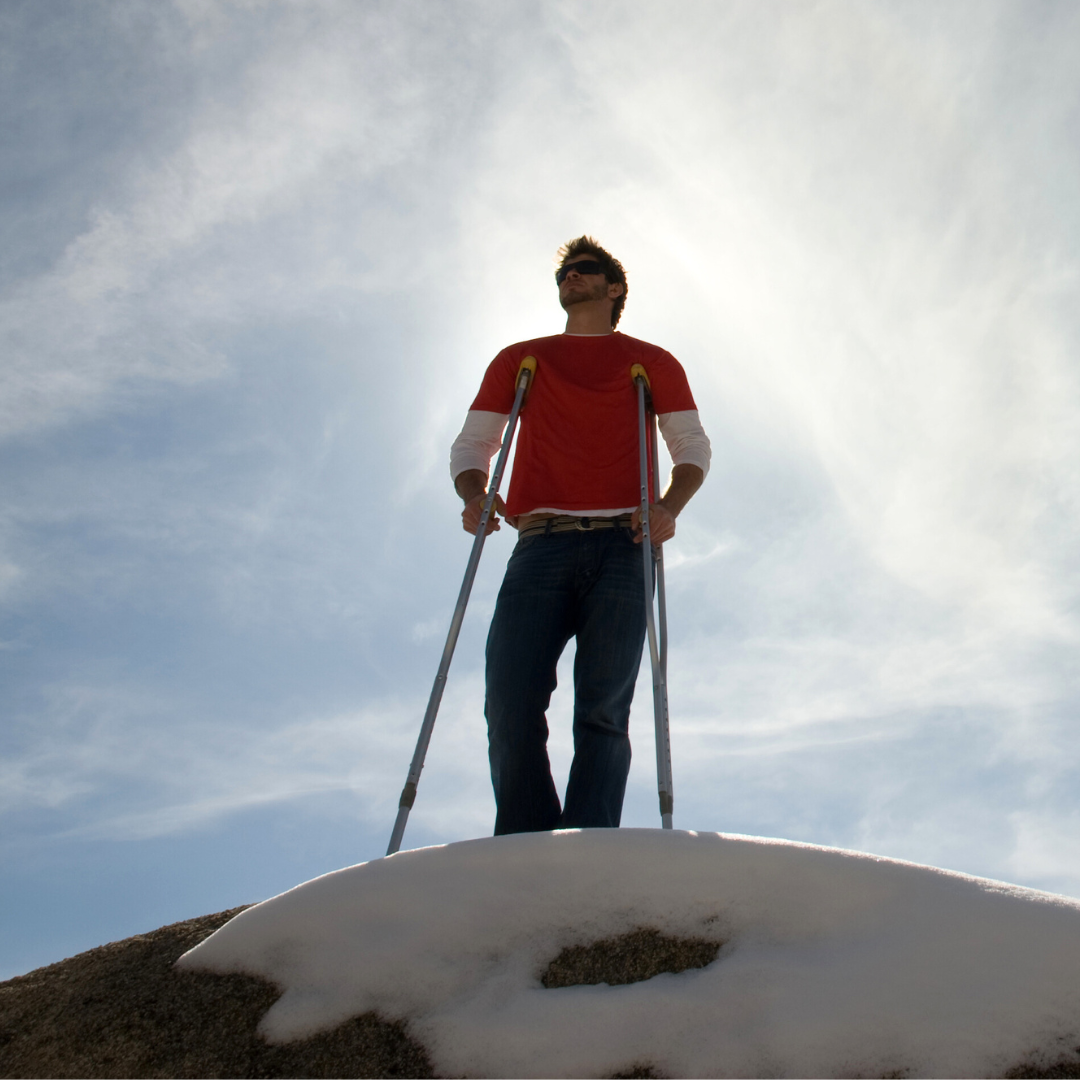
How to get the most from your injury rehabilitation
2 February 2023
Georgie Mai-Manning
Clinic Director, Sports Therapist, S&C Coach
My personal and professional thoughts on how to recover from injury and come back stronger
In my early thirties, I had extensive surgery on my foot and ankle. It was an elective procedure to improve my hypermobility symptoms of a dropped arch, an ankle that rolled inwards, and the resulting pain and constant swelling.
In my mind, I would be back to everyday life within a couple of months of leaving the operating theatre, but the early weeks that followed were full of frustration, pain, fear and depression. I sought private physiotherapy support as I felt the exercises given to me on discharge weren’t enough. Working with this physiotherapist gave me my first insight into a true ‘return to function / sport’ rehabilitation programme.
I focused on my rehab entirely as I was signed off work for three months, and I flipped the process into a truly positive one full of growth and development. It is what led to me retraining as a Sports Therapist, resulting in me founding the Rehab Hub with the rehabilitation principles I had discovered, which were:
- Come back stronger
- Trust the process
- Do the work, ask questions and provide feedback
- Don’t stop when the pain goes
- Learn something new and turn up the fun!
I would take myself to the swimming pool and back every day (a couple of miles), on crutches, where I taught myself front crawl and swam a hundred lengths. To be honest, in hindsight, we really wouldn’t advise that of our patients! But it’s what helped me cope – learning something new, becoming the fittest I’d ever been, and focusing entirely on getting better served me well.
I rehabilitated beyond my point of initial weakness and injury and went on to learn to run and undertake many half Iron Man distance triathlons.
Come back stronger
It is essential that your injury rehabilitation takes you to a point of greater strength and function than pre-injury, otherwise you are at significant risk of repeat injury time and again.
Let me explain…
Most injuries occur because of a gross weakness or musculoskeletal imbalance that has placed additional stress on muscles, tendons, ligaments and joints. That additional stress increases the load the structures need to tolerate, and when they aren’t strong enough, they will fail. This weakens the structures further – imbalances worsen, and a downward spiral of soft tissue breakdown and inadequate repair increases the risk of re-injury.
A great example of this is a repeatedly twisted ankle – we all know somebody who struggles with a ‘weak ankle’ is prone to injury. Ligamentous structures do not strengthen and return to optimal function without progressive strength work, balance and functional training – so where a rolled ankle isn’t rehabilitated, it is highly likely to become unstable and reinjure time and again.
Trust the process
The first thing to note here is that injury rehabilitation IS a process. Just like baking a beautiful cake, you need your recipe, your ingredients, a proven method, the right amount of time, and the ability to adjust the temperature and tweak the ingredients if things don’t go to plan.
The path through injury rehabilitation isn’t linear – there will be setbacks and days or weeks where you feel you’re not making progress, but if you keep taking the steps and have trust in the process, you will reach your goal.
Work with a professional who understands these elements and who you feel is a good fit for you personally. You should feel supported in your rehabilitation and that you are in safe hands.
Do the work, ask questions, and provide feedback
Your sports therapist or physiotherapist will instruct and prescribe exercises that are suitable for the various phases of healing after injury, they will progress or regress those depending on how you get on and whether they are achieving the intended outcome.
They will identify what exercises are right for you in, say, an hour’s session and then prescribe them for you to work on until your next session. The exercises prescribed in your rehab are SO important – especially in the early stages of obtaining a normal range of motion at a joint and in the beginning to load the healing soft tissues.
Therefore, you should ensure that you completely understand what is being asked of you. This includes tuning into how an exercise feels – where it is supposed to be strengthening, stretching or mobilising a part of your body. Understand the sets and repetitions and how often you should carry them out.
We love it when patients and athletes ask questions and want to fully understand what they are doing and why – both in-session and in-between sessions. Nothing is more disappointing than a patient who hasn’t done their exercises and didn’t reach out for help!
Don’t stop when the pain goes – this is NOT when you’re safe to stop injury rehabilitation
Remember my first point about ‘coming back stronger’?
The pain experienced with injuries will usually subside to a tolerable level before it is safe to return you to your goal. At this point, we see patients and athletes leaving rehabilitation because they feel they are better.
Supporting you to a pain-free point is only one of our goals for your rehabilitation, and it is only one phase of your rehabilitation pathway. Unless your strength and function are at a level that meets the demands of your sport or activity, you are highly likely to see an increase in pain and dysfunction, and you are at a very high risk of re-injury.
We always have your end goal in sight, even in the early stages, but as your pain starts to subside and your function improves, we enter into ‘return to play’, or ‘return to function’ mode. Here, we load the soft tissues more heavily to promote greater strength adaptations, begin more explosive and reaction-based training, and look at strength endurance. This vital late stage of rehabilitation will also give you the confidence to return to what you love doing.
Learn something new, and turn up the fun!
So you can’t do what you love right now – you can’t play your sport, you can’t live your life as you ordinarily do, and your days are full of boring exercises with some discomfort and difficulty. It is common to feel low when you’re injured, that’s completely normal.
As noted, the path of injury rehabilitation isn’t linear – it is a squiggly line with setbacks, hurdles and down days. This is the time to be proactive and feed your brain with challenges you regularly win – small achievements and happy interactions.
Studies have proven that athletes in injury rehabilitation fare better mentally when they undertake a course of learning at the same time. Crafting, a language, new card games, learning a magic trick even! You will feel better if, alongside your rehab, you spend some time every day doing something with a more linear pathway to success – something you can see small improvements regularly and take pleasure in doing.
As far as you can, keep up with your friends and stay involved in clubs and teams. Be proactive about putting things in the diary and ensure you have things to look forward to every week. You have to take charge of your situation and not allow your injury to dictate your mood!
If you’re in need of help
If you’re struggling to get back to what you love doing, or your daily function is challenging and painful, we would love to work with you here at the Rehab Hub.
We are a team of bodyworkers and fitness professionals with your best interests in our heart. Together we help amateur and semi-pro athletes, builders, office workers, Mums, Dads, Nans and Grandpas with equal dedication.

